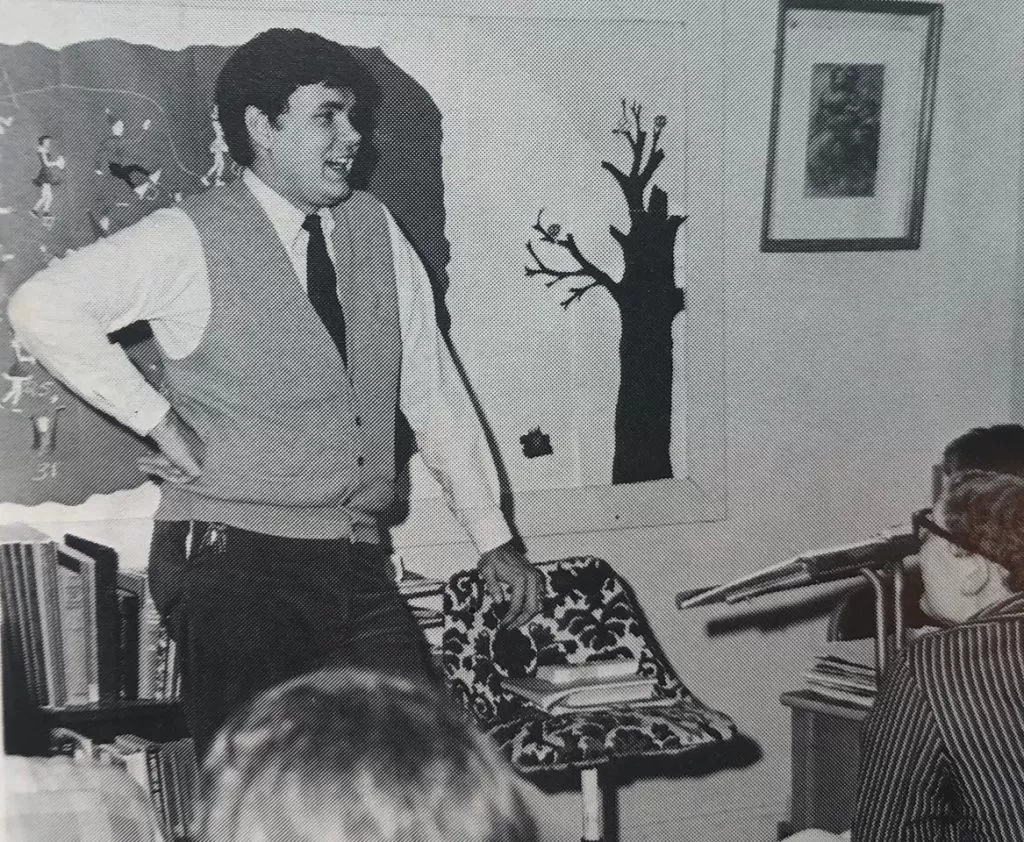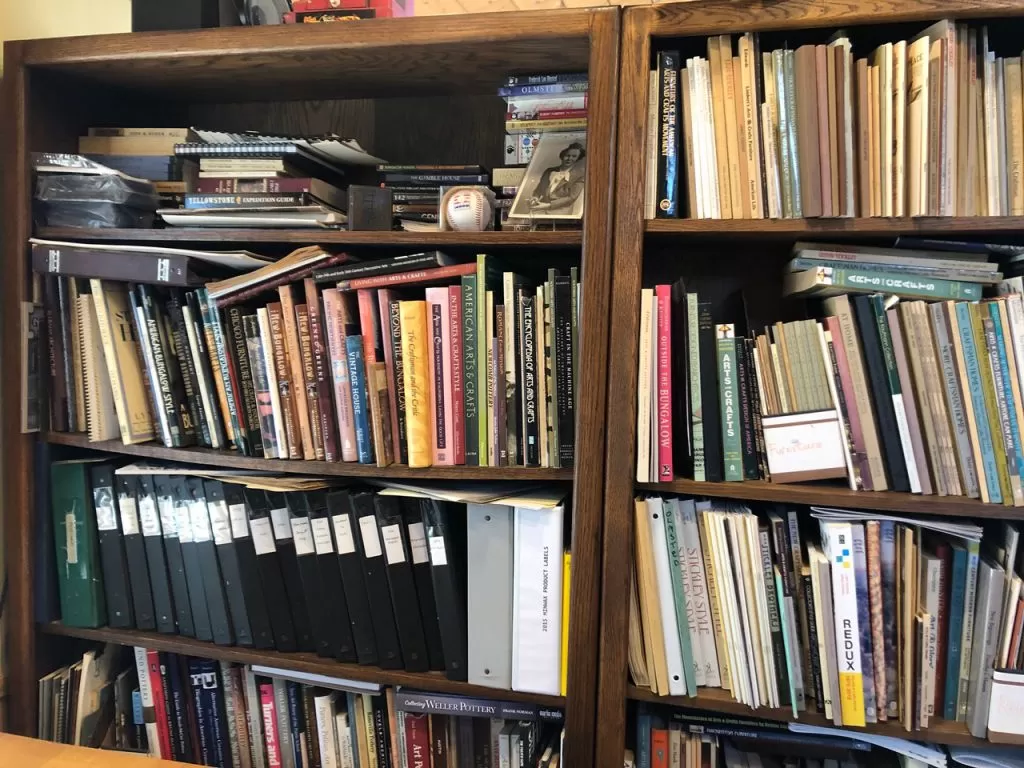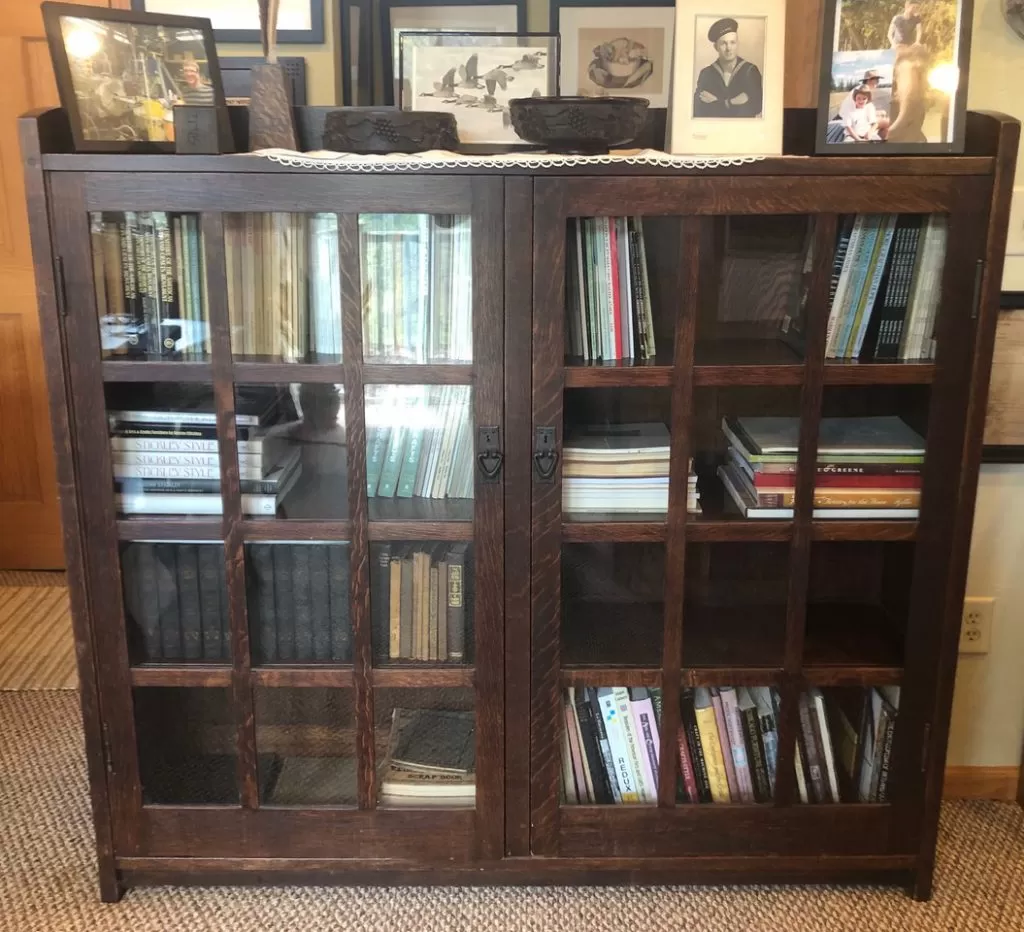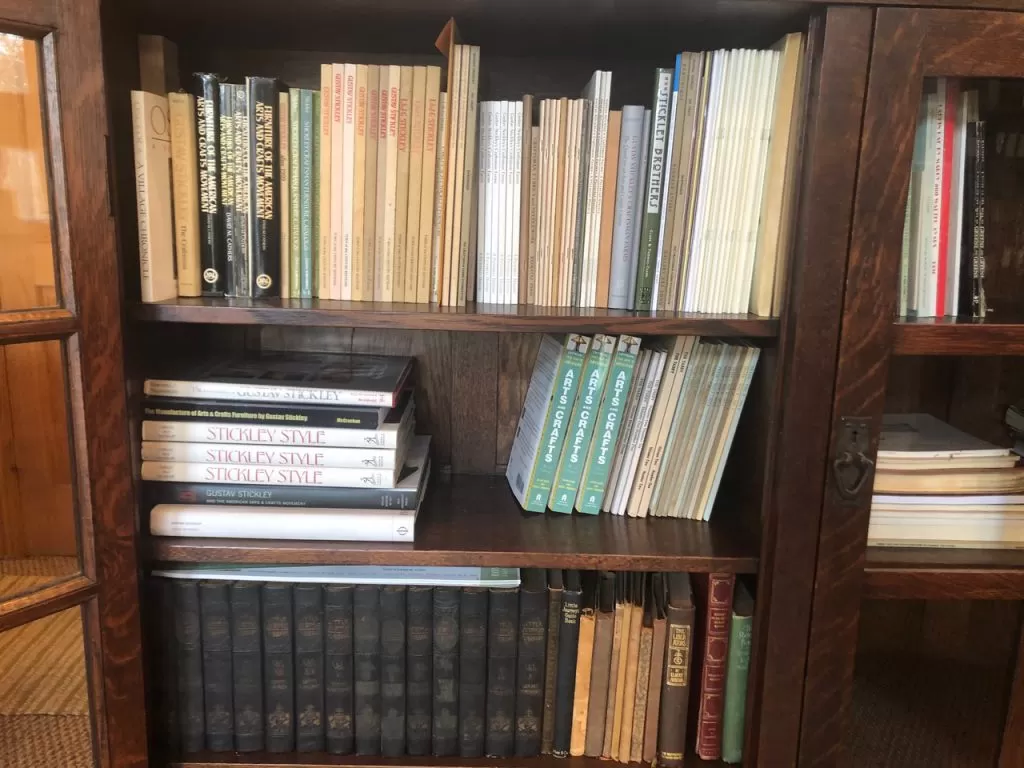Mrs. Zamansky’s Bookcase
You know its time to get organized when you find yourself buying books you already have – but cannot find.

I have had a love affair with books since I was a junior in high school writing a term paper on F. Scott Fitzgerald for my English teacher Tom Smith. In fact, I just came across my first copy of “This Side of Paradise” with my name and the date of September 11, 1967 scrawled on the opening page. The term paper did not fare as well, as it must have been discarded in one of my many moves since high school.
Trust me, no loss to the literary world.

Our current confinement gave me ample reason and time to start pulling books, papers, and file folders jammed into the seven bookcases I have here in my office, including my treasured 60-inch, 24-pane, two-door Gustav Stickley bookcase I bought from Mrs. Zamansky in 1979, the first year I began collecting Arts and Crafts furniture.
I was living in Iowa City at the time, transitioning from being a former high school English teacher, antiques restorer, woodworker, newspaper reporter, and antiques mall owner into a fulltime, professional writer. Word had gotten around town that I was buying up all the brown, pegged mission oak furniture I could find. A slight exaggeration.
I think.
Mrs. Zamansky, the widow of a university biology professor, called me to her house, a modest, cute bungalow on the north side in a quiet, tree-lined neighborhood just east of downtown. She was small, sharp, and direct, leading me immediately into her ground floor sewing room and pointing at the large oak bookcase dominating one wall.

“You need to have that,” she told me. “It’s a Stickley.”
I didn’t have to see the red decal or the faded paper label I knew would be on the back to know she was right, as I had nearly memorized David Cathers’ book “Furniture of the American Arts and Crafts Movement.” The bookcase was perfect: no damage, no repairs, and an original finish, dotted with a few paint specs from when she and her husband had last painted the room – without trying to move the bookcase away from the wall.
I knew she was right, but I also knew this bookcase could be beyond my meager budget. I opened the doors and inhaled that wonderful, musty scent of old shellac and ammonia still radiating from the pores of the fumed quartersawn oak shelves. I wanted that bookcase as badly as anything I had yet seen, but didn’t know what to say to this determined lady.
“It’s a great piece,” I stammered truthfully, “but I have no idea what it’s worth.”
“That’s easy,” she countered. “My carpenter told me.”
I looked at her quizzically.
“I’m turning my sewing room into my bedroom,” she explained, “since my doctor told me I shouldn’t be going up and down the stairs anymore. And I need a closet right where that bookcase is. My carpenter told me it would cost $1,000 for him to build it, so that is what you’re going to pay for the bookcase.”
I honestly had no idea of what the bookcase was worth that day, but I knew that I could pull together a thousand dollars, even if it meant (which it did) selling something else. I wrote her a check, which she graciously agreed to hold for a week, and my assistant Mike and I lugged it out of her house and into the back of my Ford Econoline van. Since then my massive Stickley bookcase has been moved a total of eight times in forty years. Hopefully, I won’t have to move it a ninth.

Today I have cleaned it out, moved some now less-important books to even more bookcases inside our house, and shifted some books from my other jammed bookcases into it.
In doing so have found several books that I had either forgotten I had or had never been able to find.
And have discovered more than a few duplicates . . . .

Until next week,
“When I have a little money, I buy books; and if I have any left, I buy food and clothes.” – Erasmus
Bruce
P.S. – Speaking of books, we are looking for suggestions for titles for our two Arts and Crafts Book Club Discussions to be held at next February’s National Arts and Crafts Conference. Please send us yours!
